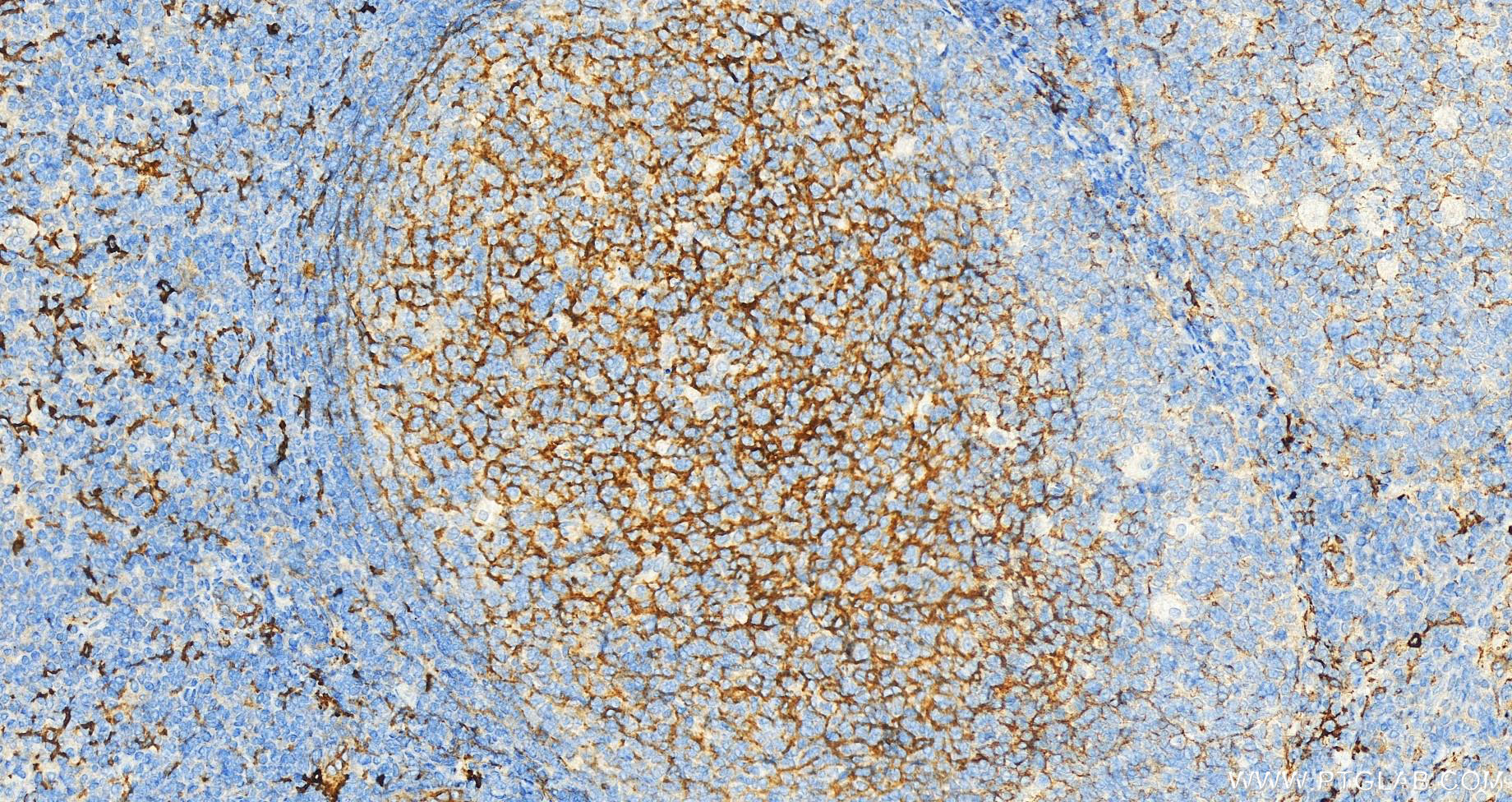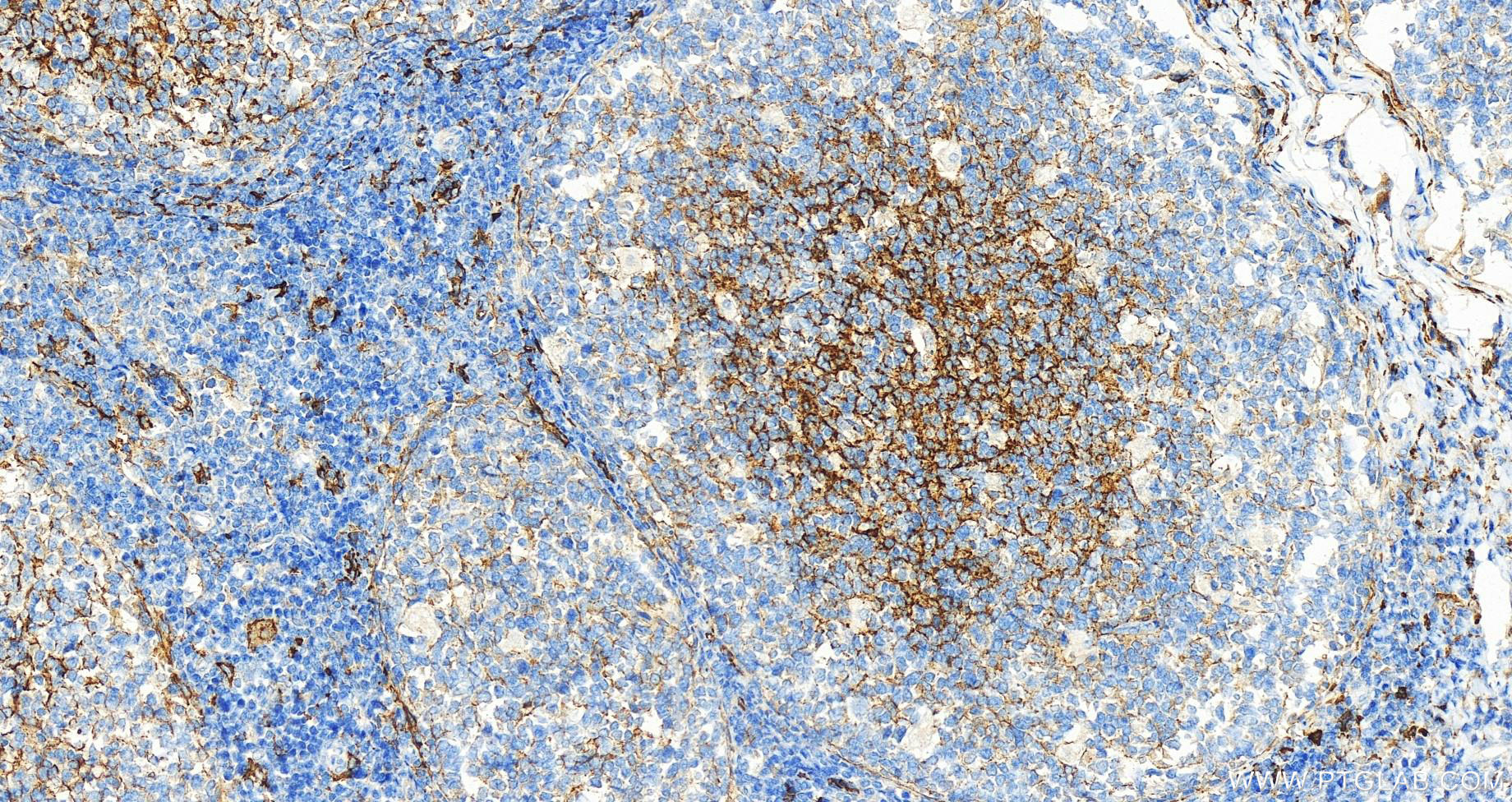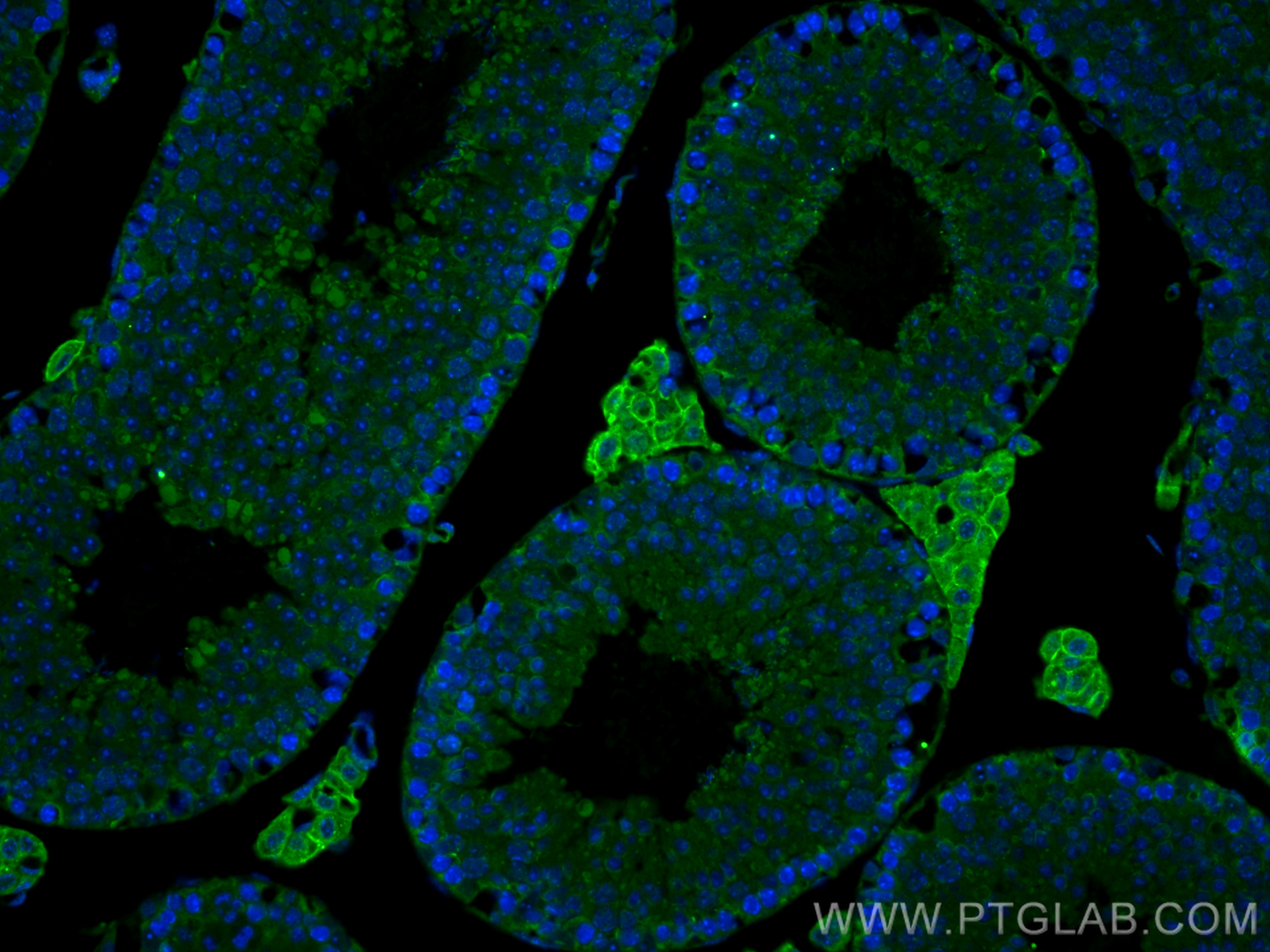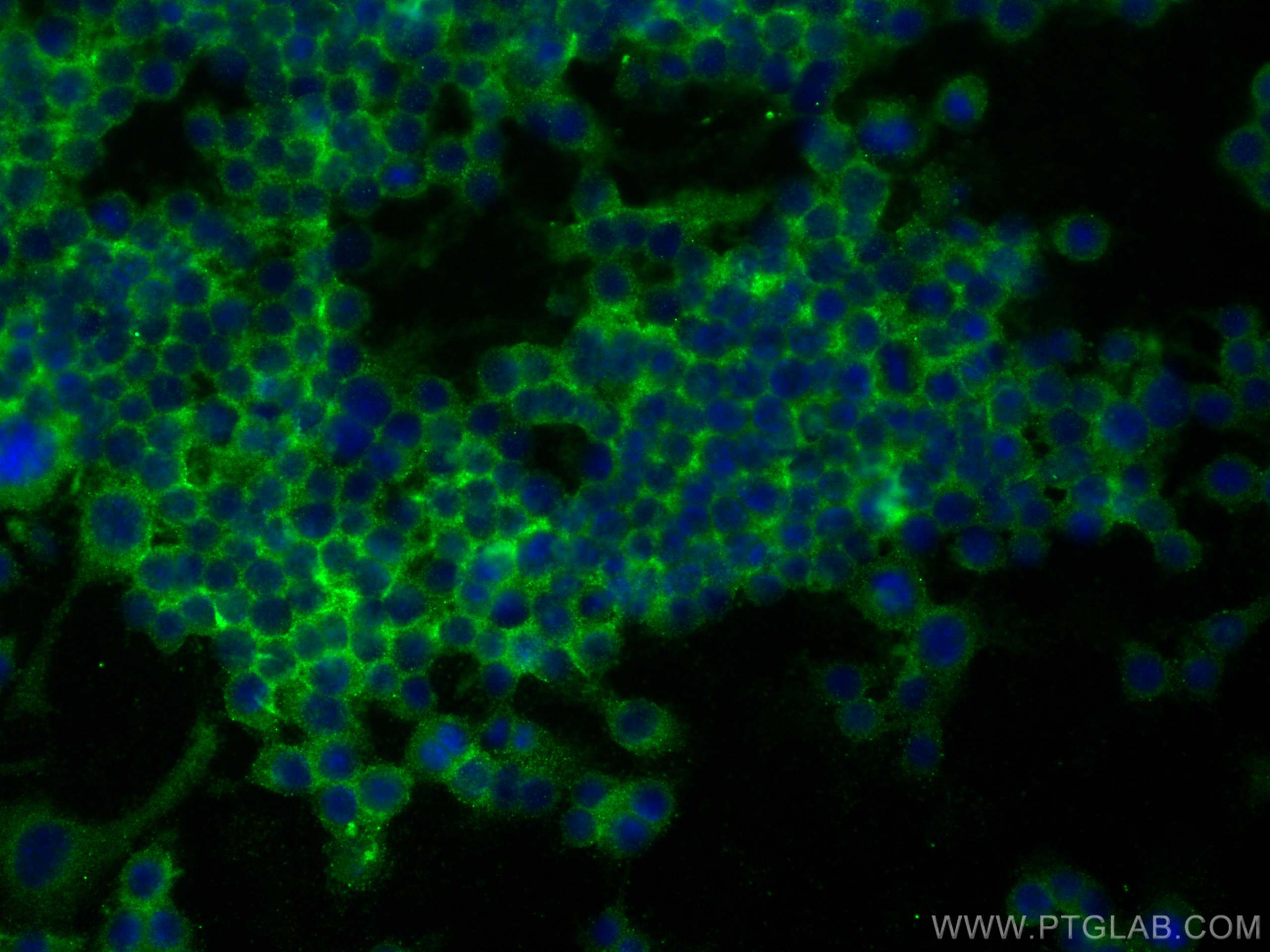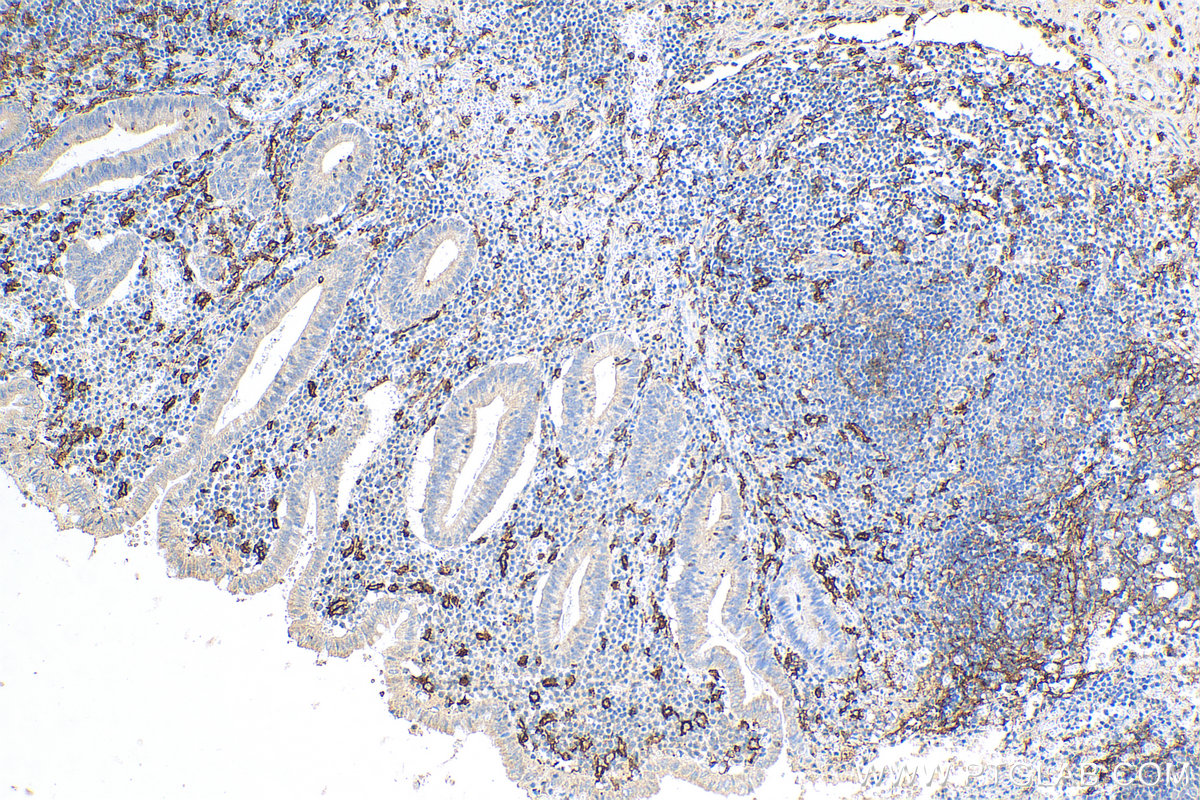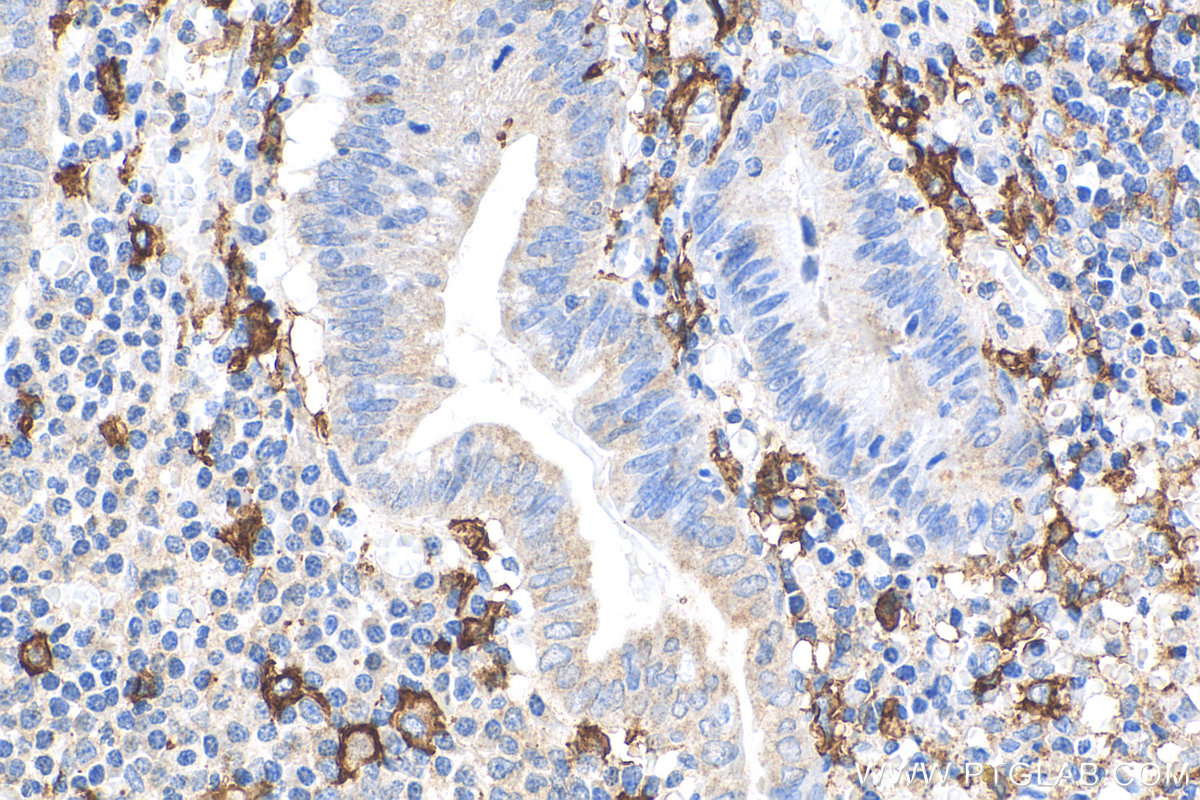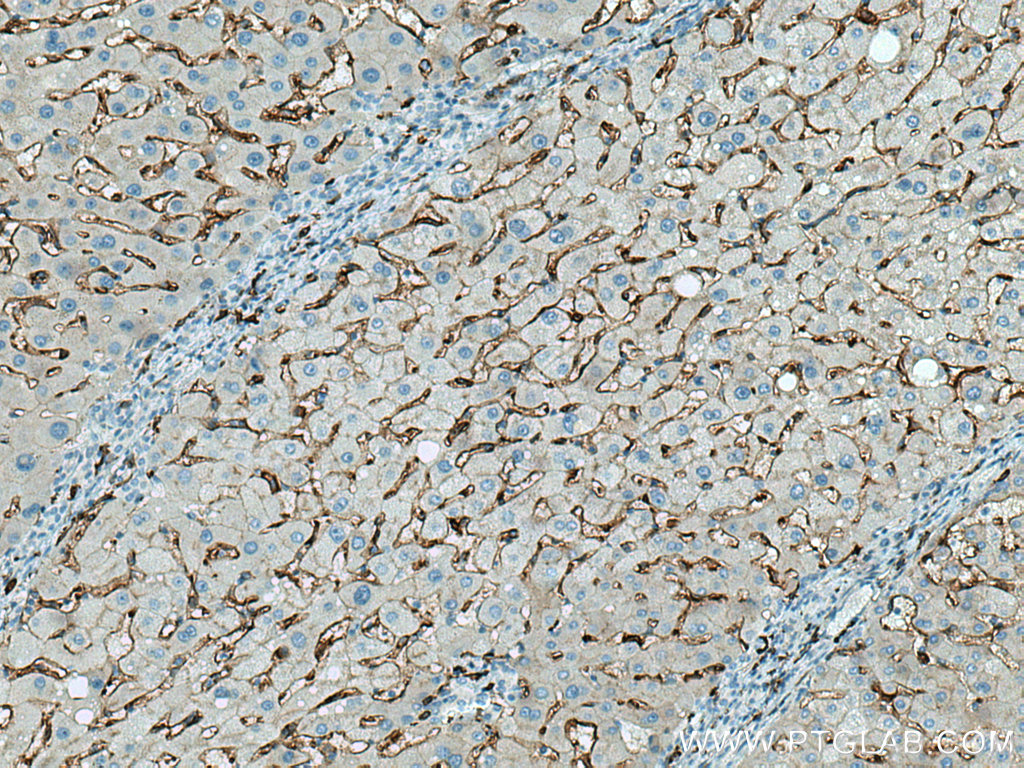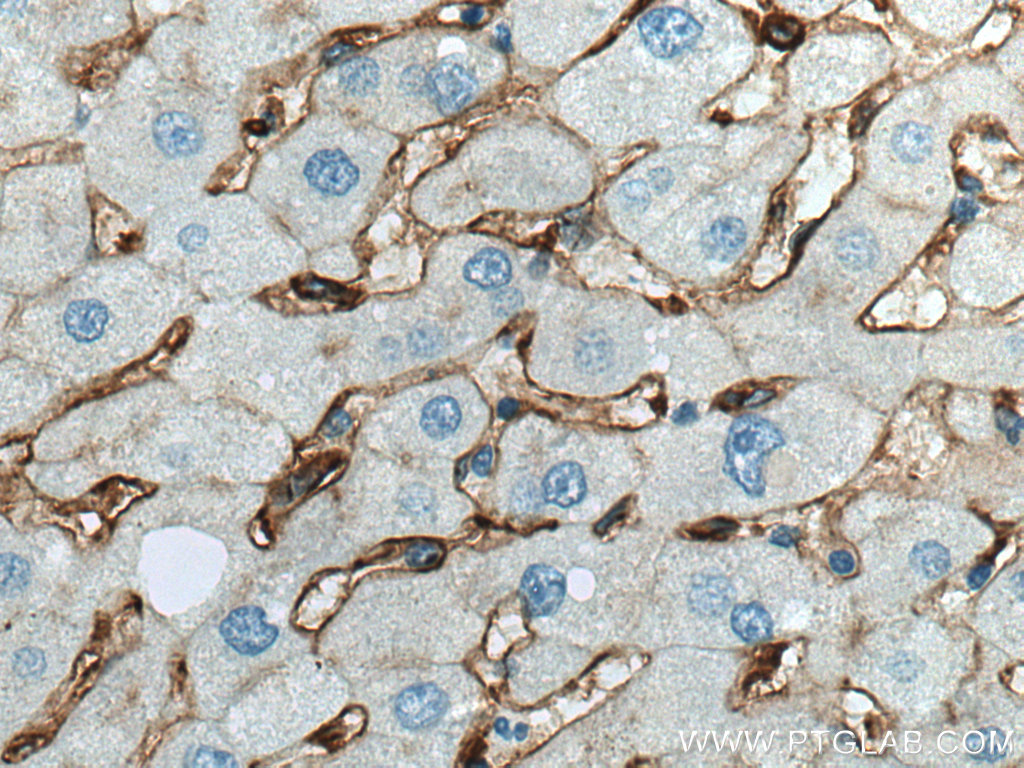验证数据展示
经过测试的应用
| Positive IHC detected in | human tonsillitis tissue, human appendicitis tissue, human hepatocirrhosis tissue Note: suggested antigen retrieval with TE buffer pH 9.0; (*) Alternatively, antigen retrieval may be performed with citrate buffer pH 6.0 |
| Positive IF-P detected in | mouse testis tissue |
| Positive IF/ICC detected in | RAW 264.7 cells |
推荐稀释比
| 应用 | 推荐稀释比 |
|---|---|
| Immunohistochemistry (IHC) | IHC : 1:1000-1:4000 |
| Immunofluorescence (IF)-P | IF-P : 1:200-1:800 |
| Immunofluorescence (IF)/ICC | IF/ICC : 1:50-1:500 |
| It is recommended that this reagent should be titrated in each testing system to obtain optimal results. | |
| Sample-dependent, Check data in validation data gallery. | |
产品信息
17000-1-AP targets CD14 in WB, IHC, IF/ICC, IF-P, ELISA applications and shows reactivity with human, mouse, pig samples.
| 经测试应用 | IHC, IF/ICC, IF-P, ELISA Application Description |
| 文献引用应用 | WB, IHC, IF |
| 经测试反应性 | human, mouse, pig |
| 文献引用反应性 | human, mouse, rat, pig, sheep |
| 免疫原 | CD14 fusion protein Ag10693 种属同源性预测 |
| 宿主/亚型 | Rabbit / IgG |
| 抗体类别 | Polyclonal |
| 产品类型 | Antibody |
| 全称 | CD14 molecule |
| 别名 | Myeloid cell-specific leucine-rich glycoprotein, Monocyte differentiation antigen CD14, urinary form, Monocyte differentiation antigen CD14, membrane-bound form, CD14 molecule |
| 计算分子量 | 375 aa, 40 kDa |
| 观测分子量 | 50-55 kDa |
| GenBank蛋白编号 | BC010507 |
| 基因名称 | CD14 |
| Gene ID (NCBI) | 929 |
| ENSEMBL Gene ID | ENSG00000170458 |
| RRID | AB_2074048 |
| 偶联类型 | Unconjugated |
| 形式 | Liquid |
| 纯化方式 | Antigen affinity purification |
| UNIPROT ID | P08571 |
| 储存缓冲液 | PBS with 0.02% sodium azide and 50% glycerol pH 7.3. |
| 储存条件 | Store at -20°C. Stable for one year after shipment. Aliquoting is unnecessary for -20oC storage. |
背景介绍
CD14 is a 50-55 kDa glycosylphosphatidylinositol-anchored glycoprotein preferentially expressed on monocytes and macrophages, and at lower levels on granulocytes (PMID: 3385210; 2462937; 7685797). CD14 can also exist as a soluble protein. CD14 acts as a co-receptor for bacterial liposaccharides (LPS) (PMID: 1698311). It plays a major role in the inflammatory response of monocytes to LPS.
实验方案
| Product Specific Protocols | |
|---|---|
| IHC protocol for CD14 antibody 17000-1-AP | Download protocol |
| IF protocol for CD14 antibody 17000-1-AP | Download protocol |
| Standard Protocols | |
|---|---|
| Click here to view our Standard Protocols |
发表文章
| Species | Application | Title |
|---|---|---|
Sci Immunol Clostridium septicum α-toxin activates the NLRP3 inflammasome by engaging GPI-anchored proteins. | ||
Nat Commun HIF1α inhibition facilitates Leflunomide-AHR-CRP signaling to attenuate bone erosion in CRP-aberrant rheumatoid arthritis. | ||
EBioMedicine Patient-derived melanoma organoid models facilitate the assessment of immunotherapies | ||
Biomaterials Construction of functional magnetic scaffold with temperature control switch for long-distance vascular injury | ||
Biomaterials Cerebro- and renoprotective activities through platelet-derived biomaterials against cerebrorenal syndrome in rat model. |
